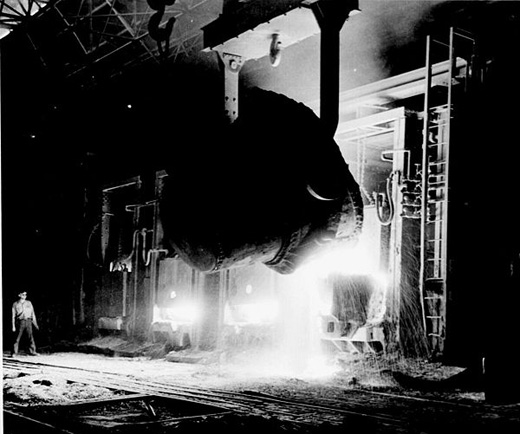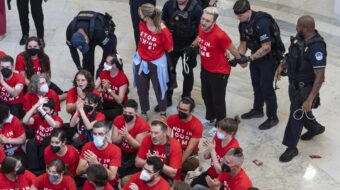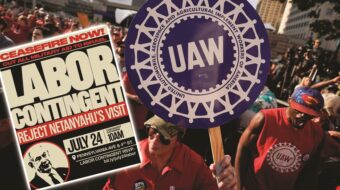
Members of the United Steelworkers of America went on strike against the major U.S. steel producers on July 15, 1959, the start of record 116-day steel industry strike. The key issue in the strike was contract language on new technology and job security.
When it appeared the walkout would be prolonged, Republican President Dwight D. Eisenhower invoked the back-to-work provisions of the Taft-Hartley Act, anti-union legislation passed by Congress in 1947. The Steelworkers sued and the case went all the way to the U.S. Supreme Court, where the justices upheld the constitutionality of Taft-Hartley. On Nov. 7, 1959, the court affirmed a district court’s injunction ordering the workers back to work for an 80-day cooling-off period.
Taft-Hartley was passed in 1947, in the wake of the 1946 Oakland General Strike.
Women led the general strike that massed some 140,000 workers. The strike occurred after police attempted to break a picket line of retail workers. The 400 workers employed at 2 department stores went on strike after being refused the right to form a union. Workers were also outraged by police supported efforts to bring scab goods in by truck. The general strike ended on December 5th after promises were made the cops would end the attempt to bring in scab goods. The retail workers won the right to form a union four months later.
In U.S. labor history, it wasn’t until the upsurge of the 1930s that workers were able to win the protections of the Norris-LaGuardia Act (1932), which gave affirmative sanction to the right of labor unions to organize and strike.
The law barred federal courts from issuing restraining orders or injunctions against activities by labor unions and individuals for organizing a union, striking or advising others to strike or organize.
Other gains won by the struggles that gave rise to the powerful unions of the CIO included the National Labor Relations Act (NLRA), popularly called the “Wagner Act” after its author, New York Senator Robert Wagner. That federal legislation guaranteed workers in private industry the right to organize and join labor movements, to choose representatives, bargain collectively and strike.
While prohibiting employers from engaging in unfair labor practices such as interfering with formation of a labor union, interfering with or refusing to bargain collectively with unions representing a company’s employees, the NLRA had no provisions defining as unfair any practices by unions. The legislation served to spur the growth of unions from 3,584,000 members in 1935 to 10,201,000 by the beginning of World War II.
Other New Deal legislation made it a felony to transport any person in interstate commerce for the purpose of strike-breaking; provided for “prevailing wages;” restricted regular working hours to eight hours a day and 40 hours a week; prohibited the employment of convicts [prison slave labor], and children under 18; and established sanitation and safety standards. The tables were turned in 1947 when the 81st Congress, controlled by Republicans for the first time since 1930, overruled President Truman’s veto and rammed the Taft-Hartley Law through Congress. (An ailing Senator Wagner was carried into the Senate chamber on a stretcher to cast his vote.)
It severely limited strike activities, specifically prohibited sympathy strikes and general strikes, severely weakening the power of organized labor.
Commenting on the passage of the Taft-Hartley law, Eleanor Roosevelt said, “Instead of clamping down on the labor movement, Americans should be extremely grateful to unions.”
Workday Minnesota contributed to this article.
Photo: A huge vat of molten steel being poured into a mold. Public domain, Wikimedia Commons.











Comments